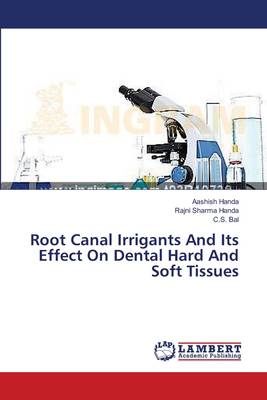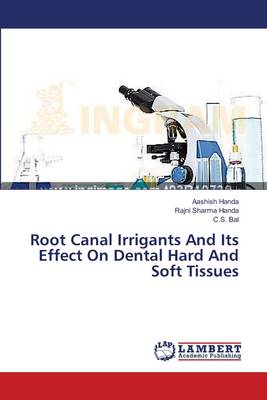
- Afhalen na 1 uur in een winkel met voorraad
- Gratis thuislevering in België vanaf € 30
- Ruim aanbod met 7 miljoen producten
- Afhalen na 1 uur in een winkel met voorraad
- Gratis thuislevering in België vanaf € 30
- Ruim aanbod met 7 miljoen producten
Zoeken
Root Canal Irrigants And Its Effect On Dental Hard And Soft Tissues
Aashish Handa, Rajni Sharma Handa, C.S. Bal
Paperback | Engels
€ 87,45
+ 174 punten
Omschrijving
The success of endodontic therapy depends on thorough cleaning and three-dimensional obturation of root canal. Successful cleaning entails the use of instruments to physically remove substances, irrigating systems to flush loosened materials away and to dissolve contents from inaccessible region. The most commonly used root canal irrigants are sodium hypochlorite, hydrogen peroxide, ethylene diamine tetra acetic acid, normal saline, citric acid and MTAD. Irrigation solutions used during endodontic treatment react with organic and inorganic components of dental hard tissues, thereby, altering the physical and chemical properties like adhesion, modulus of elasticity, microhardness, tensile & flexural strength etc., of the tooth thereby predisposing to fracture. Also, the cytotoxicity of these agents is concentration dependent, higher the concentration more is the side-effects. Therefore, to attain maximum benefits of the irrigating solutions only minimal required concentration should be used.
Specificaties
Betrokkenen
- Auteur(s):
- Uitgeverij:
Inhoud
- Aantal bladzijden:
- 192
- Taal:
- Engels
Eigenschappen
- Productcode (EAN):
- 9783659556395
- Verschijningsdatum:
- 16/06/2014
- Uitvoering:
- Paperback
- Afmetingen:
- 150 mm x 220 mm
- Gewicht:
- 290 g

Alleen bij Standaard Boekhandel
+ 174 punten op je klantenkaart van Standaard Boekhandel
Beoordelingen
We publiceren alleen reviews die voldoen aan de voorwaarden voor reviews. Bekijk onze voorwaarden voor reviews.








